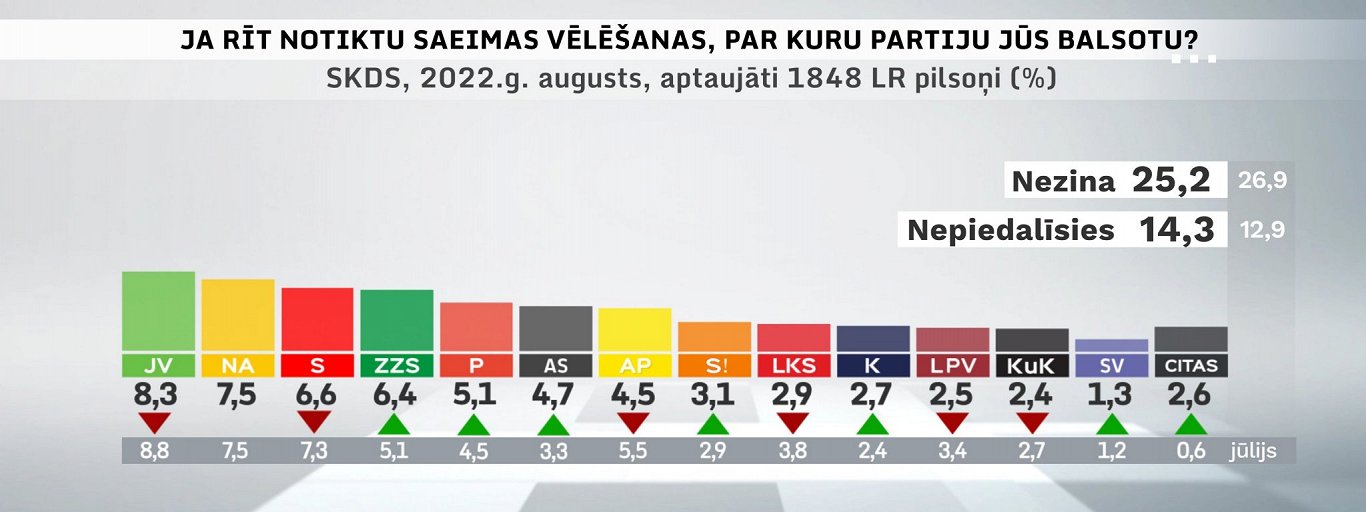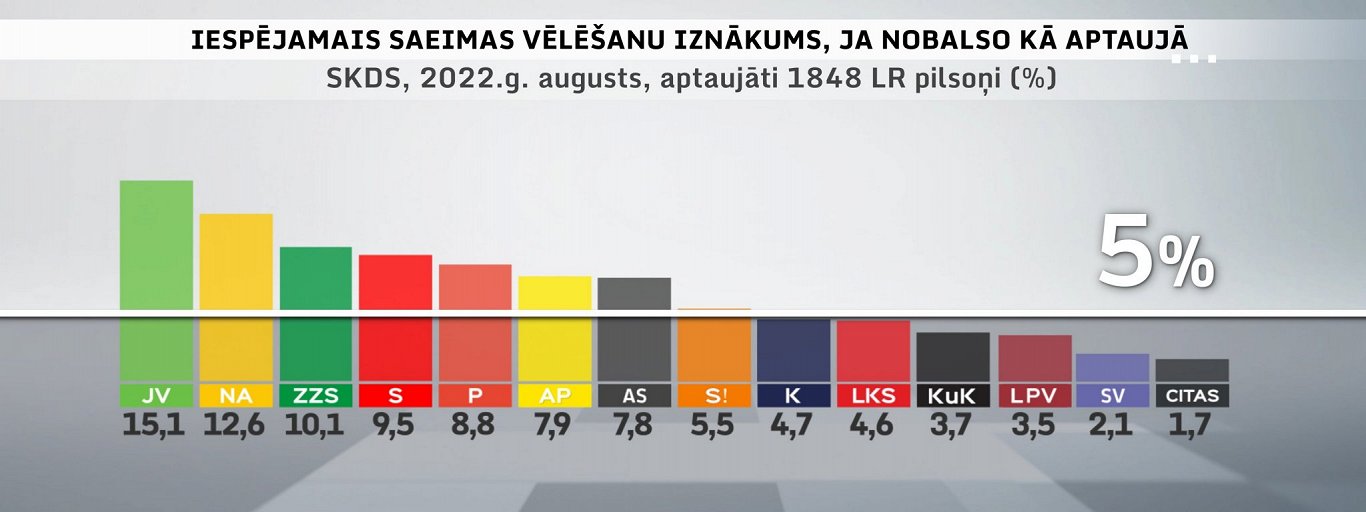With parliamentary elections due to take place on October 1, around half of the nineteen parties contesting the elections could claim seats in the Saeima chamber with numerous smaller, newer parties not copletely out of the race.
Asked "If Saeima elections were held tomorrow, which political party or association would you vote for?" the 1,848 Latvian citizens surveyed replied as follows in August.

The Jauna Vienotība (New Unity, JV) of Prime Minister Krišjānis Kariņš maintains its leading position with 8.3% of respondents opting for it, though it has seen a slight dip from 8.8% support in July. Second place is held by another party in the current coalition, the right-of-center Nacionala Apvienība (National Alliance, NA) with 7.5% support, the same level as in July.
Third place is the Saskaņa (Harmony, S) party that traditionally draws much of its support from Latvia's large Russian minority. Its rating fell from 7.3% in July to 6.6% in August. Fourth is the Zaļo un zemnieku savienība (Greens and farmers' union, ZZS) which actually saw its rating rise from 5.1% to 6.4% despite, or perhaps because of, naming someone declared guilty of large-scale fraud and subject to U.S. sanctions as its preferred prime ministerial candidate.
Fifth place is claimed by the left-leaning Progresīvie (Progressives, P) with 5.1%, which is the first of the parties not currently represented in Saeima to make the list. Next is another relatively new and unrepresented political force, the Apvienotais saraksts (United list, AS) made up of various smaller parties in alliance, which attracted 4.7% support, putting it ahead of the coalition's liberal Attistibai/Par! (Development/For!) on 4.5%. The newly-formed, eurosceptic Stabilitātei! (For stability!) on 3.1% is the only other party to attract more than 3% support.
However, the proportion of people saying they either will not vote at all (14.3%) or are undecided for whom to vote (25.2%) remains high. With the 5% threshold for winning seats applied to the number of votes cast, not to the total electorate, it means that even parties attracting a relatively small number of votes have a realistic chance of winning seats if turnout is low.

When this is factored in SKDS' model, it projects that all the eight parties named above would win parliamentary representation, with another two parties, the Konservatīvie (Conservatives, K) and the pro-Russia Latvijas Krievu Savienība (Latvian Russian Union, LKS) just below the threshold.
Over the coming days we will be examining the parties and their election manifestos in a little more detail.



























